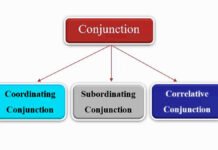Immediate Constituent Analysis, also known as IC Analysis, is a method used in linguistics to analyse the hierarchical structure of sentences by breaking them down into their immediate constituents or phrases. This approach is based on the principle that sentences are composed of smaller units or constituents, which can be further divided into even more minor constituents.
The process of IC analysis always ends when the most minor constituents are reached, which are often words. However, the analysis can also be extended into words to acknowledge how words are structured. Most tree structures employed to represent the syntactic structure of sentences are products of some form of IC analysis.
Advantages of IC Analysis
Identification of the Layers of Relationship in a Construction
IC Analysis clearly represents the hierarchical structure of sentences, allowing linguists to understand the relationships between different constituents and their roles within the sentence. IC analysis helps to display the layers or units in a sentence graphically and how the units are hierarchically organised to form the sentence. It discovers the layers of relationships in a construction. English syntax is based on this ability of structures to function within larger structures, which serve other functions in still larger, more complex structures (sentences). Composing a more complex sentence, such as The pretty girl put on her red and blue coat, kissed her mother, and left, demonstrates the nature of the relationship that must be negotiated if a hearer or a reader is to understand such a sentence. Anyone capable of understanding the sentence’s meaning has the mental capacity to keep all those relationships afloat as he hears or reads the sentence.
Syntactic Analysis
IC analysis helps analyse the syntactic structure of sentences, identifying the different phrase types (noun phrases, verb phrases, prepositional phrases, etc.) and their organisation within the sentence.
Fixity of Word Order
In IC analysis, the word order is not disturbed in any way. This advantage is best demonstrated by sorting the relationship found in the following sentences, which are composed of the same words but are different in word order:
- The boy played marbles on his knees.
- The boy on his knees played marbles.
- On his knees, the boy played marbles.
These sentences are stylistically different. In the first, the prepositional phrase ‘on his knees’ modifies the verb phrase; in the second, it modifies the noun phrase; in the third, it modifies all the rest of the sentence. Yet, in the word order within the structure, ‘on his knees’ does not change.
Language Description
IC Analysis is helpful in describing the grammatical rules and patterns of a language, as it reveals the underlying structure and relationships between constituents.
To Account for Ambiguities and Distinguish Them
In some cases, IC Analysis can help resolve structural ambiguities by clearly representing the constituent structure, allowing for a better understanding of the intended meaning. A famous example of old men and women can be paraphrased in two ways; it is either old men and women of all ages or old men and women. The principle of expansion here allows us two interpretations. Either old men is an expansion of a single morpheme (E.g., men or boy) or ‘men and women’ is an expansion of a single morpheme (E.g., people or men).
- old (men and women)
- (old men) and women
Cross-linguistic Comparison
The hierarchical representation of sentence structure provided by IC Analysis facilitates cross-linguistic comparisons, enabling linguists to identify similarities and differences in the syntactic structures of different languages.
Limitations of IC Analysis
Presumptions About the Grammatical Status of the Elements
Although IC analysis is supposed to precede any attempt to identify and classify the ICs as subjects, objects, or noun phrases, it is based on tacit assumptions about the grammatical status of the elements.
E.g., want to go
- want/to go
- want to/go
If we compare it with ‘want food’, the first analysis would clearly be ‘want to/go’. But the answer favoured ‘want/to go’ because the possibility of ‘to go’ is easy where obviously ‘to go’ is a constituent.
Here, such identification is grammatical because we accept an analysis which allows us to consider ‘to go’ as some nominal element and favouring the comparison with ‘want food’, so that ‘to go’ is an expansion of ‘food’ because it is of the same grammatical type.
Oversimplification
IC Analysis assumes that sentences can be neatly divided into constituent parts, which may not always be the case, especially in complex or idiomatic constructions.
Discontinuity
IC-analysis cannot assign a natural P-marker to sentences containing discontinuous constituents. That is, sometimes IC analysis cannot divide a construction into two because elements that belong together are separated in the sequence (i.e., discontinuous).
E.g., Is John coming?
Here, ‘is’ is nearer to coming than to John. The ICs of this sentence are not ‘is’ and ‘John coming’, but rather ‘is…coming’ and ‘John’. There is no non-ad-hoc way of representing this diagrammatically.
Of course, we can always carry on the IC analysis by merely permitting discontinuity. However, this makes the very assumption on which IC analysis is based less plausible – that language is essentially a one-dimensional linear string that can be chopped up into decreasing segments. It must be recalled that IC analysis depends on expansion, the substitution of sequences by single morphemes, but discontinuous sentences are not sequences.
Lexical, Constructional or Derivational Ambiguities
Lexical ambiguity arises from the same word having more than one meaning
E.g., bank
- bank of the river
- an institution where we deposit money
Constructional ambiguity is due to the difference in layering.
E.g., The pen on the table that belongs to me.
Here, the problem is that one gets confused whether it is the table or the pen that belongs to me.
Derivational ambiguity arises from the same constituents functioning differently.
E.g., the love of God.
It may mean God’s love for someone or someone’s love for God.
Constructional and derivational ambiguity can together be called structural homonymy. IC analysis can disambiguate specific constructions.
E.g., A Russian history teacher
- A Russian history/teacher – teacher who teaches Russian history
- A Russian/history teacher – the history teacher who is Russian
Syntactic ambiguity may be defined as follows: a sentence is syntactically ambiguous if it has two (or more) meanings that cannot be ascribed to the semantic structure of the words it comprises. It is sometimes referred to in the literature as constructional homonymy. IC Analysis cannot account for constructional homonymy.
E.g., John washed the car in the garage.
It may mean that (a) the car was washed by John in the garage or (b) the car in the garage was washed by John.
Ambiguity in Constituent Boundaries
In certain cases, determining the exact boundaries of constituents can be challenging, leading to potential ambiguities or disagreements among linguists.
IC Analysis is Not Below the Words
IC analysis assumes that there will be no division into pieces smaller than words (morphemes) until all the words have been divided. If we cut ‘criminal lawyer’ into ‘criminal/lawyer’, it does not sound tenable in actual practice because ‘criminal lawyer’ generally means a lawyer who deals with criminal cases. So unless we cut ‘criminal lawyer’ in a way like ‘criminal – lawyer’, the meaning does not come out clearly. However, because IC analysis does not go below the level of words, we cannot meaningfully analyse the phrase ‘criminal lawyer’.
Unbalanced Bracketing
IC analysis does not refer to our grammatical knowledge, so it only takes us a little further. Without the help of labelled bracketing, we cannot point out the sources of ambiguity in many sentences. The labelled bracketing can be used to differentiate the two possibilities, which is an example that is often against IC analysis.
E.g., What disturbed John was being disregarded by his friends.
The sentence has two possible interpretations:
- ((What (disturbed John)) (was ((being disregarded) (by (his friends.)))))
which means John’s friends disregarded him, which disturbed him.
- ((What (disturbed John)) ((was (being disregarded)) (by (his friends.))))
which means John’s friends were disregarding what disturbed him.
The Problem of Embedding
IC Analysis cannot account for sentences involving embedding.
E.g., The boy who won the prize is my cousin.
The Problem of Conjoining
IC Analysis cannot handle conjoining.
E.g., I will go and meet him.
The Problem of Unstated Elements
IC analysis fails to show elements that are unstated in a sentence.
E.g., hit the ball
The element ‘you’ is missing here, and the IC analysis cannot show this.
The Problem of the Relationship Between Sentence Types
IC analysis fails to show the relationship between sentence types such as active and passive, affirmative and negative, and statement and question.
E.g., Kapil hit a six. A six was hit by Kapil.
Here, one is active, and the other is passive, a relation not visible in IC analysis.
The Problem of Overlapping ICs
Many times, overlapping ICs also cause a problem.
E.g., He has no interest in, or taste for, music.
The sentence means to convey that he has no interest in music; he has no taste for music. The word ‘no’ applies to both interest and taste. It is not possible to show this in the IC analysis.
The Problem of Structural Similarity and Different Grammatical Relations
Some sentences are structurally similar but semantically different.
E.g., John is easy to please. John is eager to please.
IC analysis cannot explain such sentences unless they are broken up into simple pairs of sentences. In this case, we may have the following groups.
- (It) is easy. Someone pleases John.
- John is eager. He wants to please.
The process and the result of IC analysis can, however, vary greatly based upon whether one chooses the constituency relation of phrase structure grammars (= constituency grammars) or the dependency relation of dependency grammars as the underlying principle that organises constituents into hierarchical structures. An essential aspect of IC analysis in phrase structure grammar is that each word is a constituent by definition. The process is, however, much different in dependency grammars since many individual words do not end up as constituents in dependency grammars.
Inability to Capture Semantics
IC Analysis focuses primarily on the syntactic structure of sentences and does not directly address the semantic or pragmatic aspects of language.
Lack of Explanation for Word Order
While IC Analysis can identify the constituents within a sentence, it does not provide an explanation for the specific word order or the reasons behind the chosen structure.
Limited Scope
IC Analysis is primarily concerned with the analysis of sentence structure and may not be as helpful for studying other aspects of language, such as phonology, morphology, or discourse analysis.
It is important to note that Immediate Constituent Analysis is one of many tools and approaches used in linguistics, and it should be complemented with other methods and theories to obtain a more comprehensive understanding of language structure and usage.





























I do agree with all the ideas you’ve introduced in your post. They’re really convincing and can definitely work.
Still, the posts are very quick for beginners. Could you please extend them a bit from subsequent time?
Thank you for the post.